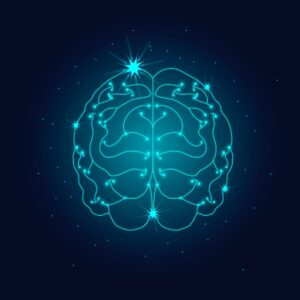The ability to communicate with a computer program as if it were a human seemed like science fiction just 5 years ago. Artificial intelligence, and especially its flagship ChatGPT, has turned science fiction into an everyday reality in the last few years. 66% people now use artificial intelligence regularly – making AI a companion to two-thirds of the planet's population.
On the one hand, it offers unprecedented opportunities to unleash creativity, speed up work processes and simplify complex processes. On the other hand, the explosive development of AI raises fears of job losses, the spread of misinformation and even a loss of control. Where is the line between a smart assistant and a potential threat? The question is no longer whether AI will be used, but to what extent and for what purpose. This is where an exciting dilemma arises: will artificial intelligence remain at the service of humans or will it gradually begin to dictate the rules of the game?
TABLE OF CONTENTS
What is artificial intelligence and how was it created?
Artificial intelligence is free – why?
The dangers of using artificial intelligence
AI and ChatGPT in Estonian
Frequently asked questions
Artificial intelligence – helper or threat?
What is artificial intelligence and how was it created?
 The term artificial intelligence was introduced as early as 1956 by an American computer scientist John McCarthy, who defined it as the science of creating intelligent machines. The first steps were simple logic and chess-playing programs. However, the great leap in the development of AI has occurred in the last decade. Huge amounts of data and unprecedented computing power have paved the way to modern generative AI.
The term artificial intelligence was introduced as early as 1956 by an American computer scientist John McCarthy, who defined it as the science of creating intelligent machines. The first steps were simple logic and chess-playing programs. However, the great leap in the development of AI has occurred in the last decade. Huge amounts of data and unprecedented computing power have paved the way to modern generative AI.
Today it is called artificial intelligence (AI) computer systems that are capable of performing tasks typically associated with human intelligence – such as learning, reasoning, problem-solving, perception and decision-making. In addition, AI enables us to analyze large amounts of data, identify patterns and adapt our actions based on experience.
The last item on the list, AI’s most impressive feature – its ability to learn from experience and adapt on its own – is also the source of its greatest fear. It is this ability to learn that has made AI an extraordinarily powerful tool, but when a machine no longer limits itself to following instructions given to it, but begins to improve its own actions, the question inevitably arises: how far can this development take it, and will humans always be able to keep the reins in their hands?
Artificial intelligence is free – why?
The market value of the global AI tools and services industry will exceed $100 billion by 2025. 350 billion euros. According to forecasts, this could reach 2031 to one trillionSo, artificial intelligence is not only popular, but also an increasingly influential sector economically, the financial importance of which is increasing exponentially. Where does this money come from and why are many AI tools free for the average user?
Many conversational and generative AI tools are free for the average user, including free AI in Estonian. This gives the impression that AI is available to everyone with unlimited access, but behind free artificial intelligence lies a well-thought-out business strategy:
- Free users are like product developers. Every question and all the information that is asked to the AI is data for the developers. All the data that reaches the AI is considered as raw material for improving the programs and models.
- A free service is a marketing weapon. In the digital world, the number of users is a measure of power. The more people use and talk about a service, the more well-known and desirable it becomes. It's a self-acting marketing machine.
- The free AI version is a sales funnel. The free package acts as a lure, allowing the user to get used to the tool and make it a part of their daily life. However, if the needs grow and the limitations of the free version (slower speed, smaller volume) start to interfere, the solution is at hand - a paid version that offers professional capabilities.
So the industry’s ever-increasing value is driven by users, both individuals and businesses, who pay for continued or increased use of a program they already know. Often, additional features – faster response, higher quality, more options, more text, priority access or tools suitable for commercial use – require a paid version. It is these paying users who cover a large part of the costs of developing AI tools, servers, maintenance and computing power, making it possible to offer free services to the general public.
The dangers of using artificial intelligence
Artificial intelligence offers many opportunities, but with them also arise serious risks. AI does not only bring convenience – it also brings responsibility. The working principles of artificial intelligence remain a so-called black box for the average user, shortcomings can lead to mistakes or injustices, and weaknesses in security can open the door to data abuse. But the working methods, shortcomings and security of AI programs themselves are not the only risk factors.
One of the most important, though often underestimated, threats is the human being himself and his goals, critical thinking and morality with which AI is guided. This is precisely why technological progress alone is no longer enough. Artificial intelligence literacy must also be developed: the ability to understand when and how to trust AI, how to critically evaluate it and how to avoid the risks it poses.
Data security
AI systems require huge amounts of data to function. This can include sensitive information, such as personal data, emotional conversations, or financial data. If data protection is not adequate, it can lead to leaks or misuse. In the worst case, hackers can use the information obtained through AI for identity theft, extortion, or cyberattacks.
This has raised a fundamental question: “Who is responsible for data protection?” Is it the AI that collects or uses data in ways that humans do not understand or control, or the human who builds, maintains, or carelessly uses the program? Thus, data security is one of the most important challenges in the development and use of AI.
Data deficiency
AI decisions are based on training data. AI doesn’t “think” like a human – it imitates patterns in the data it’s trained on. If that data is incomplete, outdated, or biased (for example, only reflecting the experiences of certain social groups), this distortion will carry over into the decisions.
For example, AI is increasingly being used to evaluate and select CVs. In doing so, AI can give an unfair advantage to one group because past data reflects certain patterns. For example, AI can automatically favor men when selecting CVs if past successful candidates have mostly been men.
Such situations and information show that data inadequacy is not just a technical problem, but directly affects people's lives and opportunities. When AI is used in areas where people's rights and well-being are at stake – work, education, the justice system – biased or incomplete data can exacerbate inequalities and lead to wrong decisions that are difficult to reverse.
Trust in artificial intelligence
In the study “Trust, Attitudes, and Use of Artificial Intelligence: Global Survey 2025” surveyed over 48,000 people in 47 countries between November 2024 and January 2025. The study revealed that 83% of AI users believe that AI has great benefits and a positive impact on their lives. However, only 46% of people who use AI are willing to fully trust AI systems. However, a large proportion of users rely on AI output without checking its accuracy (66%) and make mistakes in their work as a result (56%).
These results clearly highlight the tension between the benefits offered by AI and the risks it poses. While awareness of the shortcomings of AI has grown, there is still a noticeable lack of care in user behavior, with many failing to verify the information they receive from AI before using it. This paradox – awareness of the risks but at the same time a reckless reliance on AI – confirms the need to emphasize the responsible and critical use of AI in both everyday life and work processes.
AI and ChatGPT in Estonian
While the first artificial intelligence solutions were available mainly in English, in recent years AI has reached into hundreds of languages around the world, including many different artificial intelligences in Estonian. Language support began to expand around 2022, as generative models became more capable and could handle smaller and more complex languages.
Although multilingual artificial intelligence (such as machine translation Google Translate) has existed for a long time, a significant qualitative leap occurred around 2022. The ChatGPT model, announced at the end of 2022, made generative artificial intelligence available to the general public. These models no longer just translated or analyzed text, but were able to create coherent and context-sensitive text in many languages. Today, ChatGPT has conversational capabilities of more than In 50 languages, including in Estonian. ChatGPT is available in a free version in Estonian.
This development has made AI a global tool that can be used by people from different cultures and language areas – each in their own native language. However, it should be noted that the output of AI for large languages (such as English, Spanish or Chinese) is much more accurate and advanced, because the models are trained on more data. In smaller languages, artificial intelligence may make more mistakes or sometimes provide less fluent text, including AI chat in Estonian. But development is happening quickly.
FAQ
Is ChatGPT safe to use?
ChatGPT is safe to use if you do it consciously. The application does not collect user data for personal business or share it with third parties. However, it should be remembered that all entered text is part of the development of the model. Therefore, you should not share confidential information or sensitive personal data, such as passwords, personal identification numbers or company trade secrets, as this data may be used to train the model. It should also be noted that AI can provide factually incorrect information. It is a good tool for everyday questions and creative work, but critical facts should always be checked with reliable sources.
Can the use of AI really have a negative impact?
Yes. While AI offers enormous opportunities, it also brings risks: the spread of misinformation, mistakes made due to overconfidence, privacy issues, and the risk of job losses. AI may also affect human skills and critical thinking if all tasks are handed over to technology.
Real-life cases where artificial intelligence has caused harm or gone astray are collected and published by the AI Cases Database (AI Incident Database). There are specific cases where AI has supported or amplified negative user behavior, facilitated fraud, or widely spread misinformation. This shows that the risks are not theoretical, but that negative consequences are already here.
Are there any examples where the use of AI is prohibited somewhere?
Yes. EU Artificial Intelligence Law In the European Union, organizations and companies are prohibited from using systems that, for example, manipulate people's decisions without their knowledge or exploit vulnerabilities (or are not dependent on age, disability, or other social conditions). EU Artificial Intelligence Law is the world's first comprehensive legal framework that regulates artificial intelligence on a risk-based basis, banning more dangerous applications and setting strict requirements for high-risk systems.
It is also available in many schools and universities in the US and around the world. completely banned or restricted use of ChatGPT, fearing plagiarism or superficial acquisition of knowledge. These steps show that while AI is a useful tool, its use requires clear rules and a responsible approach.
Can AI replace teachers, translators, or creatives?
AI can support these areas by providing quick solutions or ideas, but it does not completely replace humans. Creativity, empathy, and a sense of context still remain the domain of humans. Rather, AI acts as a tool that helps specialists do their work more effectively. Just as an accountant uses accounting programs in his work that make certain parts of the work faster or automate them, people in different fields can use AI tools to automate the routine parts of their work in order to focus on strategic and human-contact tasks. The real value is created precisely when humans and artificial intelligence are responsible for each other, not when one replaces the other.
Artificial intelligence – helper or threat?
The explosive development of recent years has brought artificial intelligence to hundreds of languages, making it accessible around the world. However, this rapid development forces us to appreciate not only the enormous opportunities of AI, but also the serious risks it poses. While AI tools like ChatGPT are safe assistants in everyday work, their use requires awareness of risks such as the spread of misinformation and data privacy.
It is fair to note that in writing this article, I, as the author, also used the help of artificial intelligence, such as ChatGPT, to gather primary information, get ideas, and formulate sentences. However, all input has been carefully checked, fact-checked, and finally edited by me to ensure the accuracy and quality of the content. This work process reflects the main message of the article: the greatest value of artificial intelligence lies in the collaboration of humans and technology, where the final responsibility and critical decision always remain with humans.




